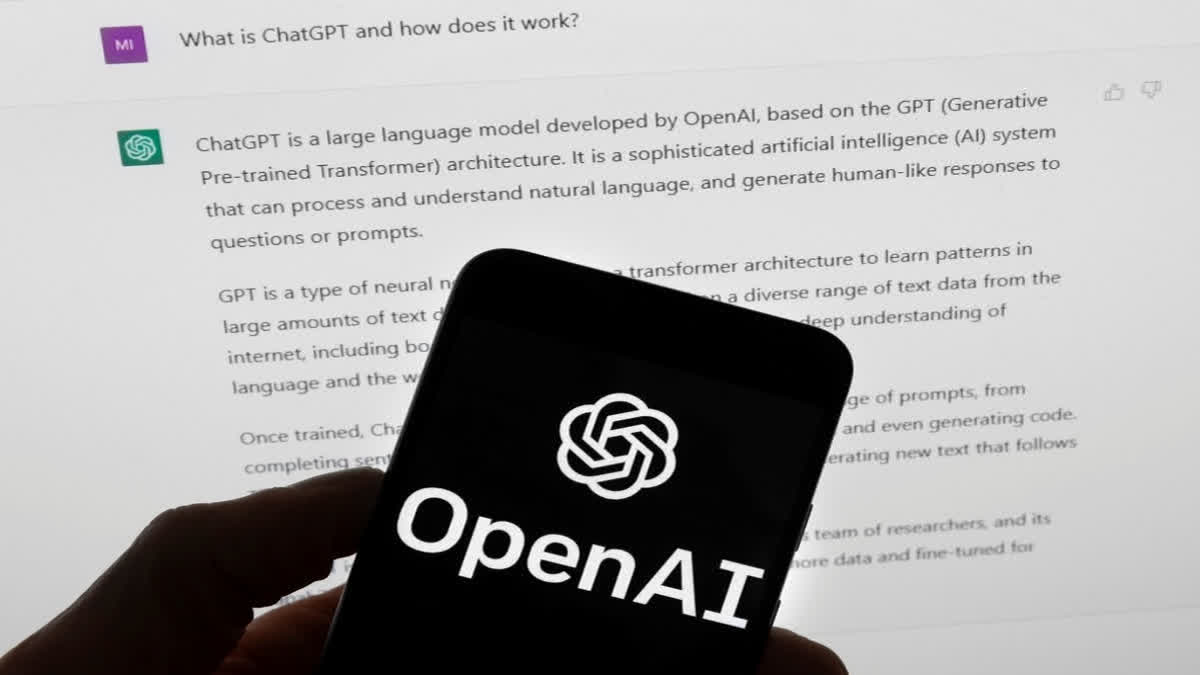New Delhi: Britain will hold the world’s first Artificial Intelligence (AI) safety summit in November, the British High Commission here announced. According to a statement issued by the High Commission, international governments, leading AI companies and experts in research will unite for crucial talks on November 1-2 on the safe development and use of frontier AI technology.
“The UK has long been home to the transformative technologies of the future, so there is no better place to host the first ever global AI safety summit than at Bletchley Park this November,” the statement quoted British Prime Minister Rishi Sunak as saying. “To fully embrace the extraordinary opportunities of artificial intelligence, we must grip and tackle the risks to ensure it develops safely in the years ahead. With the combined strength of our international partners, thriving AI industry and expert academic community, we can secure the rapid international action we need for the safe and responsible development of AI around the world.”
British Technology Secretary Michelle Donelan said that international collaboration “is the cornerstone of our approach to AI regulation, and we want the summit to result in leading nations and experts agreeing on a shared approach to its safe use”.
“The UK is consistently recognised as a world leader in AI and we are well placed to lead these discussions,” she said. “The location of Bletchley Park as the backdrop will reaffirm our historic leadership in overseeing the development of new technologies.”
So why has Bletchley Park been chosen as the venue for this all-important summit?
Actually, Bletchley Park was the home of the British Enigma code-breaking programme during the Second World War. It was here that Alan Turing, the celebrated English mathematician, computer scientist, logician, cryptanalyst, philosopher, and theoretical biologist, designed devices that changed the course of the Second World War saving millions of lives. This story is captured in the 2014 film The Imitation Game in which Benedict Cumberbatch plays the role of Turing.
Nearly 10,000 people worked in the wider Bletchley Park organisation. During the Second World War, the estate housed the Government Code and Cypher School (GC&CS), which regularly penetrated the secret communications of the Axis Powers – most importantly the German Enigma and Lorenz ciphers. The GC&CS team of code-breakers included, apart from Turing, Gordon Welchman, Hugh Alexander, Bill Tutte, and Stuart Milner-Barry. The nature of the work at Bletchley remained secret until many years after the war.
Initially, the mansion and much of the site was bought by a builder in 1938 for a housing estate project. But, in May the same year, Admiral Sir Hugh Sinclair, head of the Secret Intelligence Service (SIS) or MI6 as it is known today, bought the mansion and 58 acres of land for 6,000 pounds for use by the GC&CS and SIS in the event of war. He used his own money as the government said that it did not have the budget for this.
At first, GC&CS followed its pre-war recruitment policy and looked for “men and women of a professor type” through contacts at Oxford and Cambridge universities. Many famous code-breakers including Turing, Welchman and Tutte were found this way. Others such as Dilly Knox and Nigel de Grey had started their code-breaking careers during the First World War. The organisation started in 1939 with only around 150 staff, but soon grew rapidly.
As the code-breaking process became more mechanised, and the volume of intercepts grew, many more staff were recruited from a wider range of sources, including the British Civil Service. As a consequence, civilians and uniformed personnel worked alongside each other in most sections. A small group of American service personnel were also brought over and integrated into a number of the Sections.
Also read: AI-generated artworks can't be copyrighted, rules US judge
This was the first time many of the British staff had met an American, “but the visitors fitted in very well”, according to the Bletchley Park website.
According to the British High Commission statement, the roots of AI can be traced back to the leading minds who worked at Bletchley during the Second World War, with code-breakers Jack Good and Donald Michie among those who went on to write extensive works on the technology.
The announcement of the AI safety summit comes after British Government allocated 13 million pounds last week to revolutionise healthcare research through AI. The funding supports a raft of new projects including transformations to brain tumour surgeries, new approaches to treating chronic nerve pain, and a system to predict a patient’s risk of developing future health problems based on existing conditions.
“No country will be untouched by AI, and no country alone will solve the challenges posed by this technology,” British Foreign Secretary James Cleverly was quoted as saying in the statement. “In our interconnected world, we must have an international approach. The origins of modern AI can be traced back to Bletchley Park. Now, it will also be home to the global effort to shape the responsible use of AI.”



